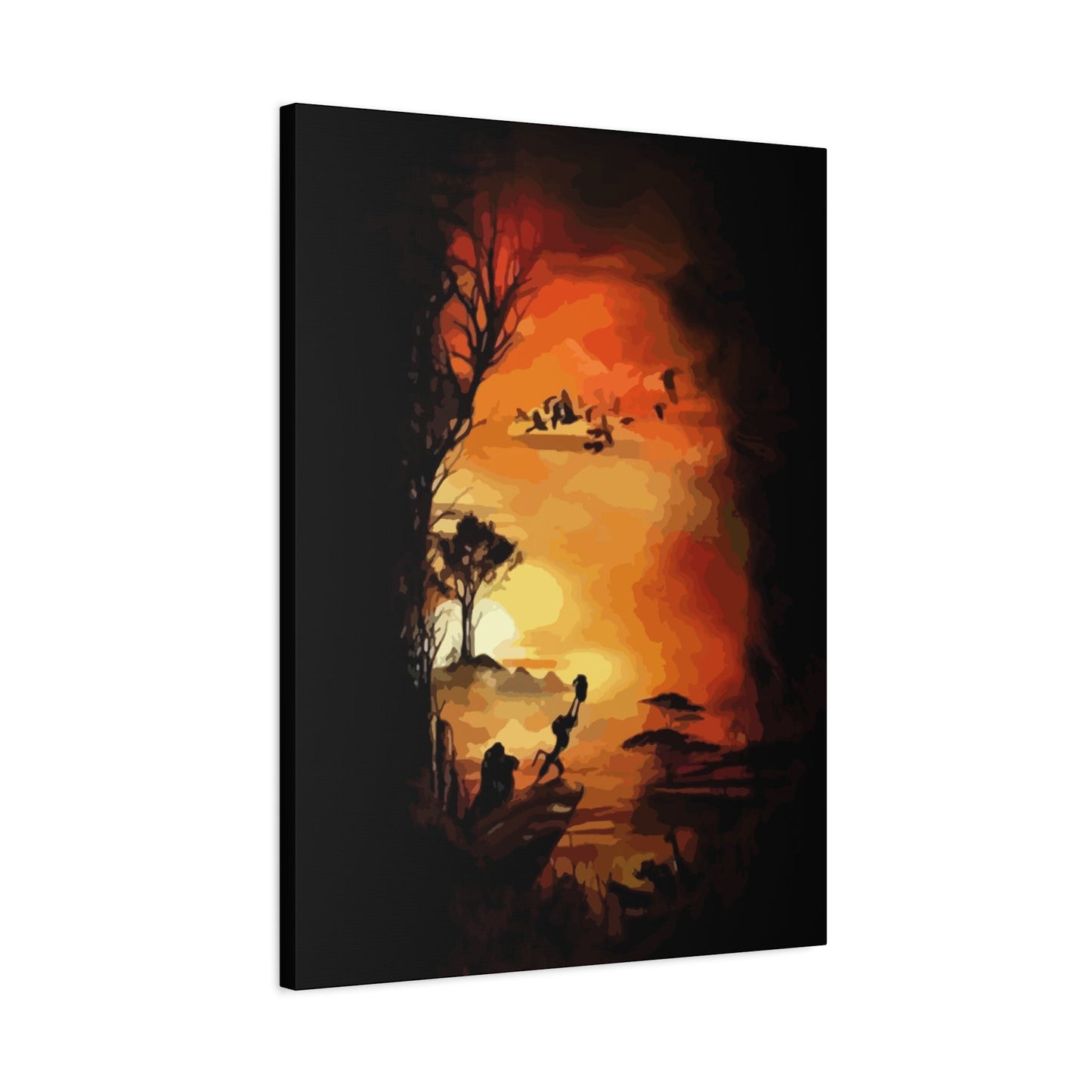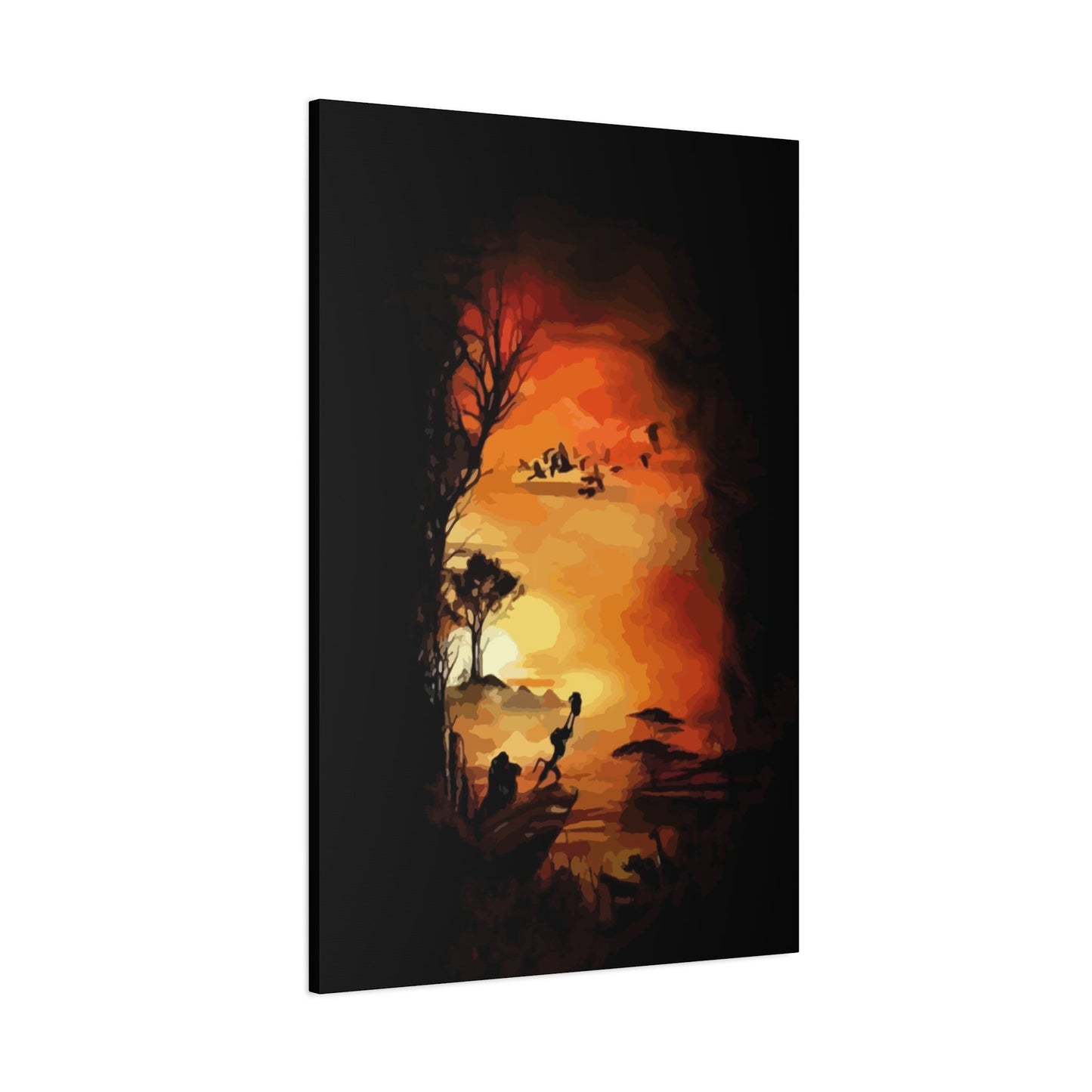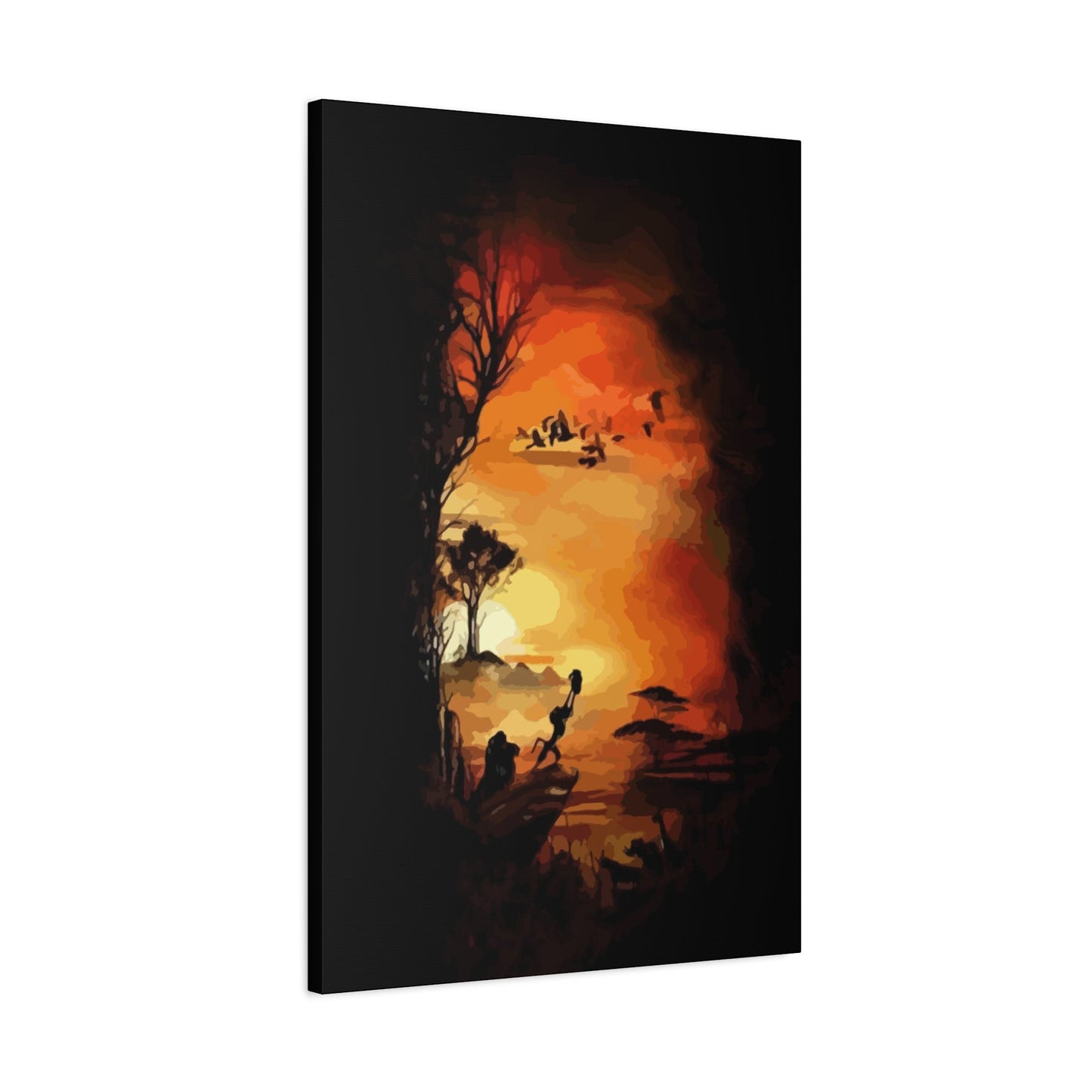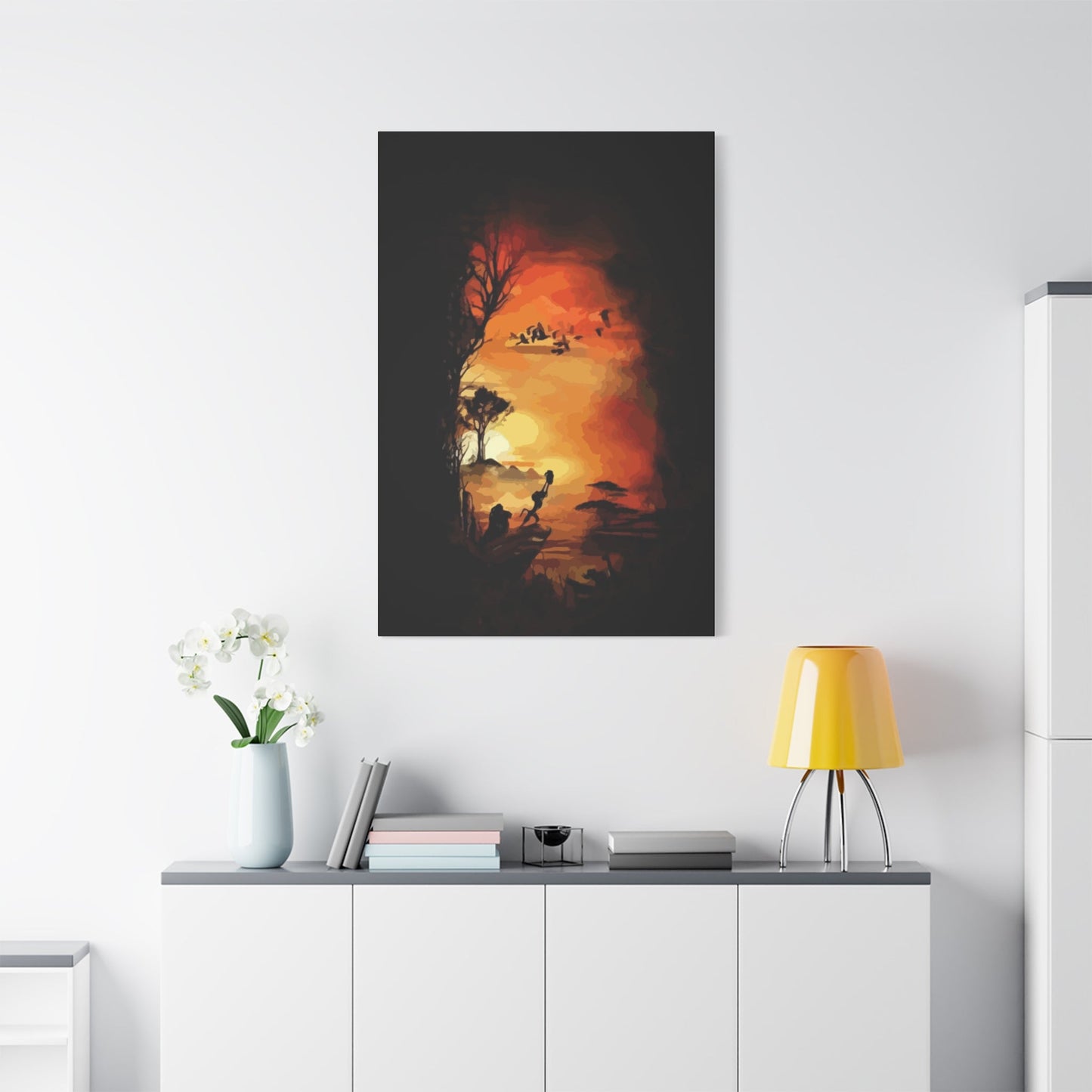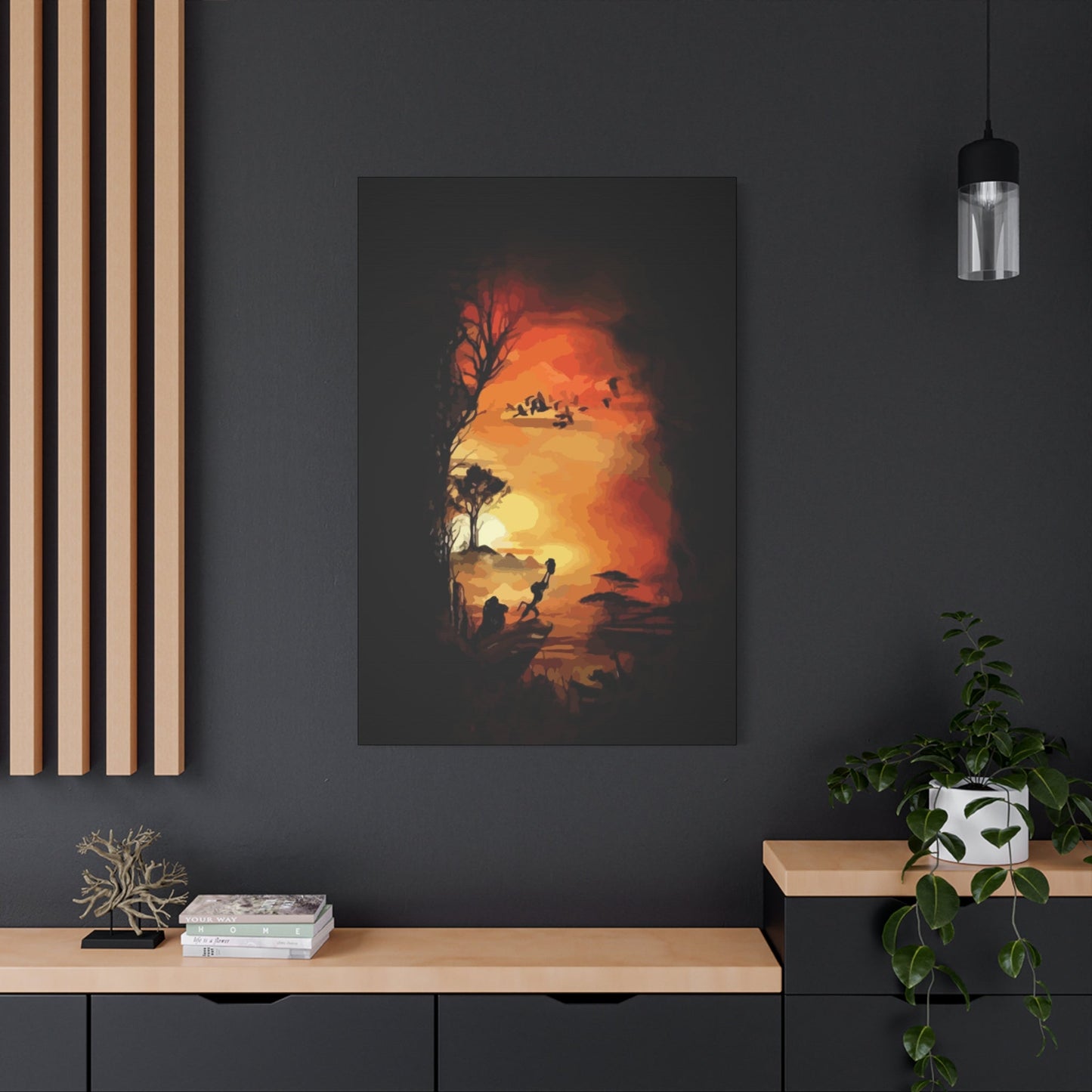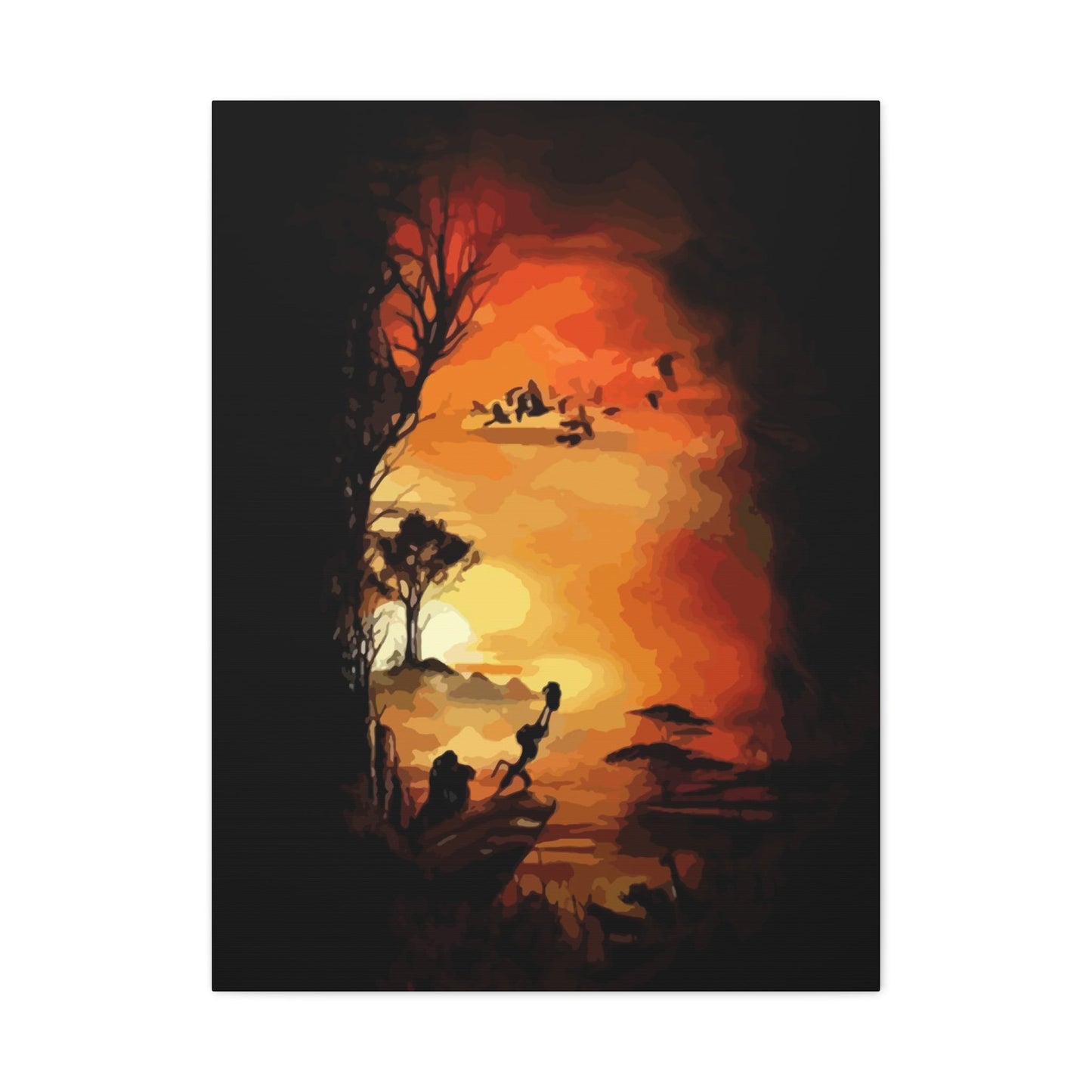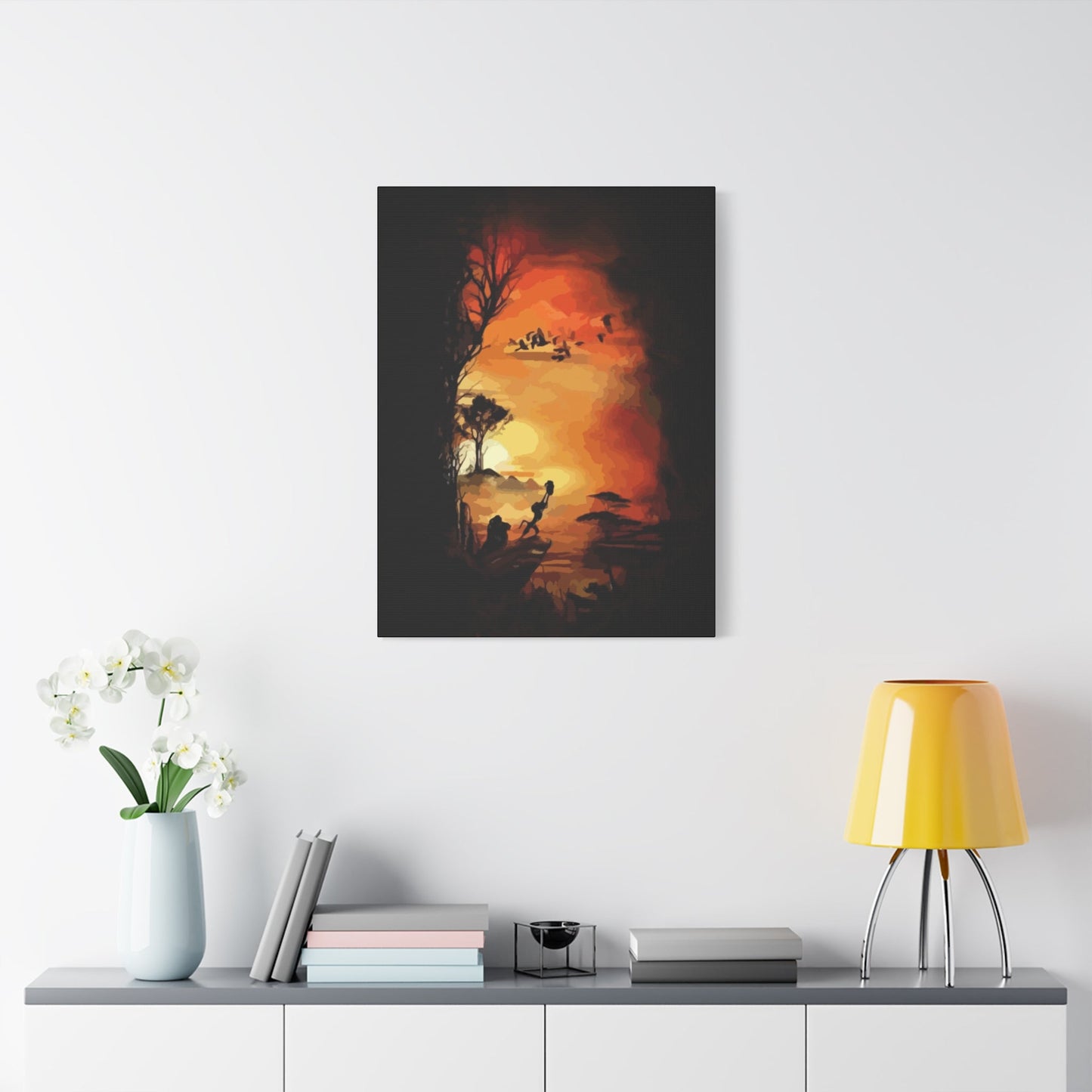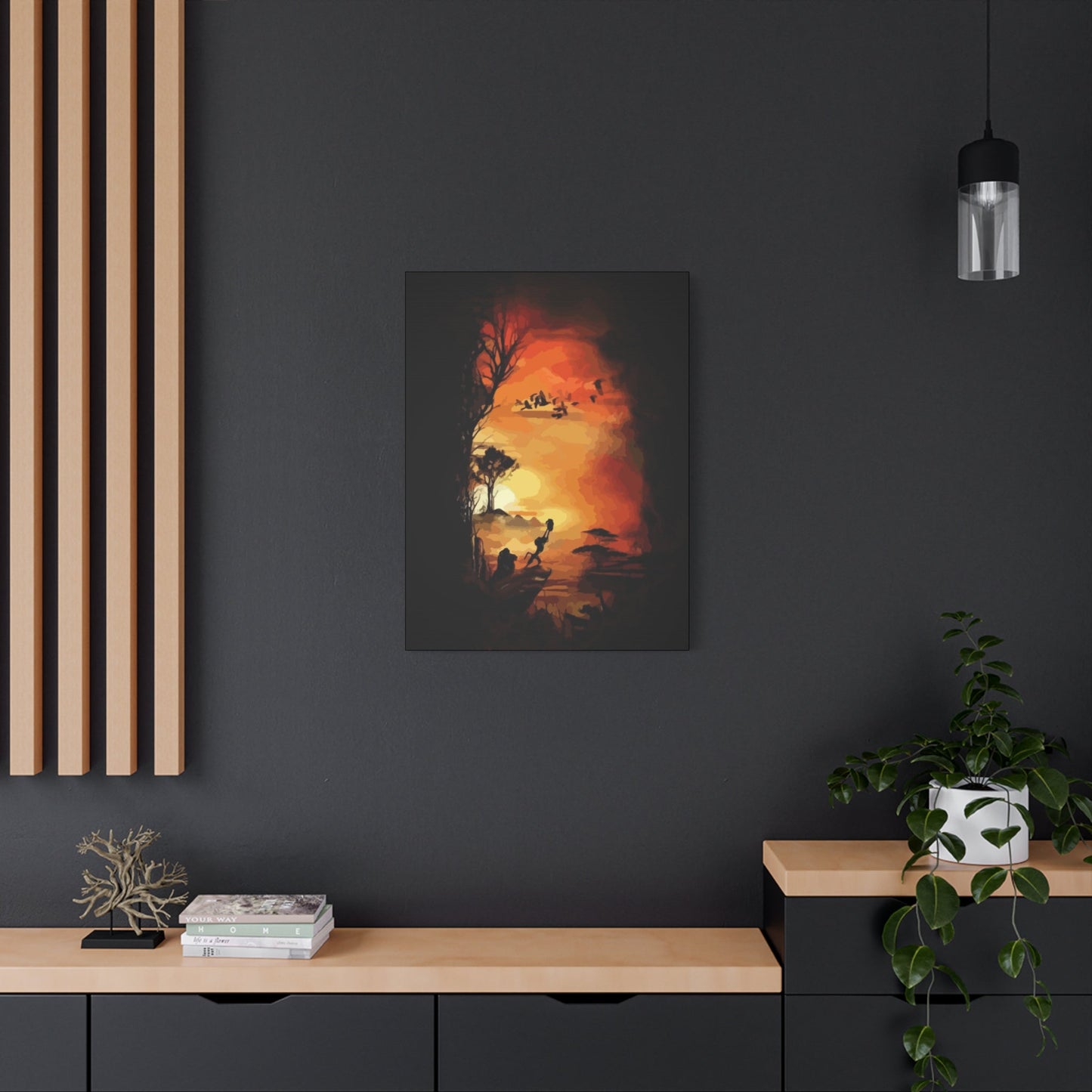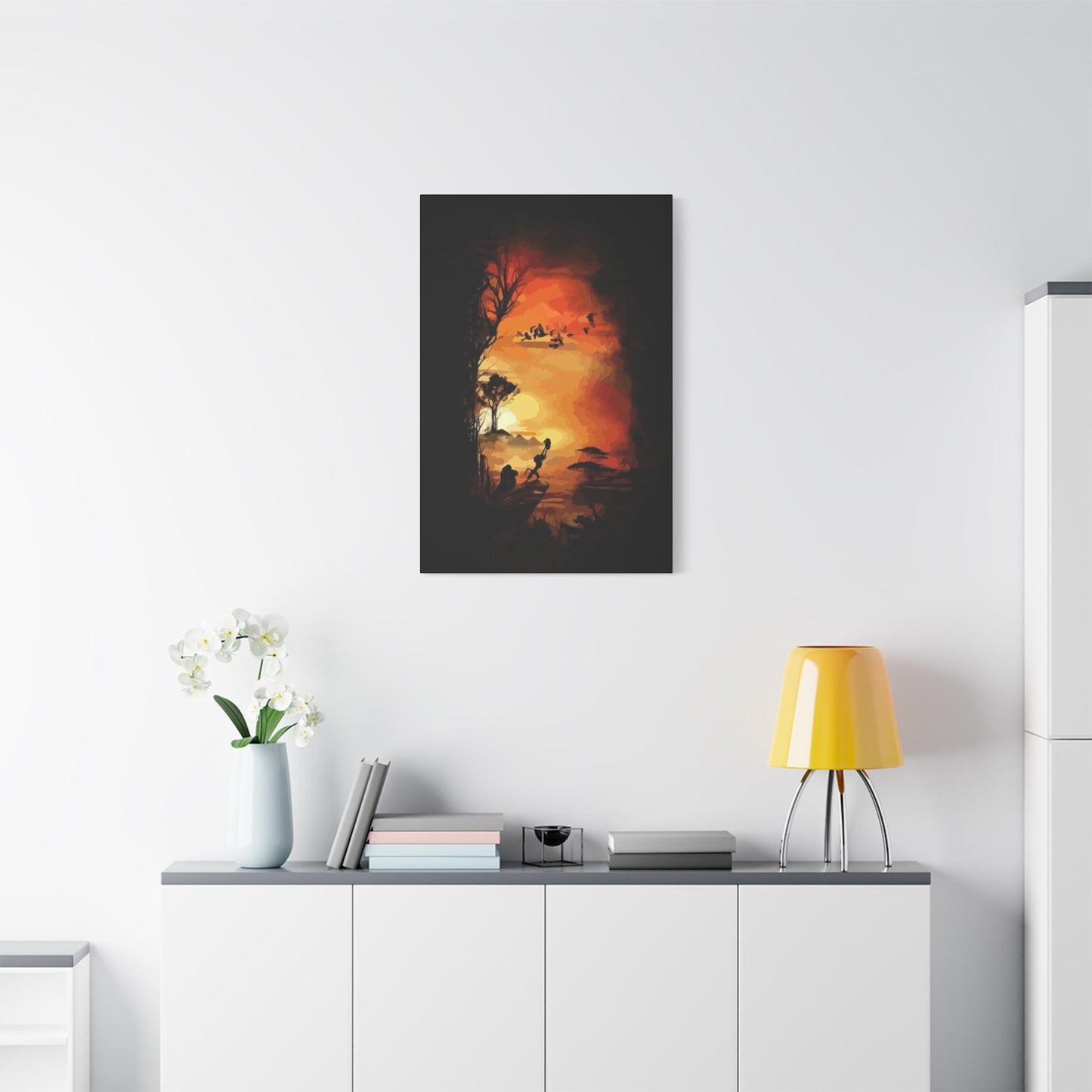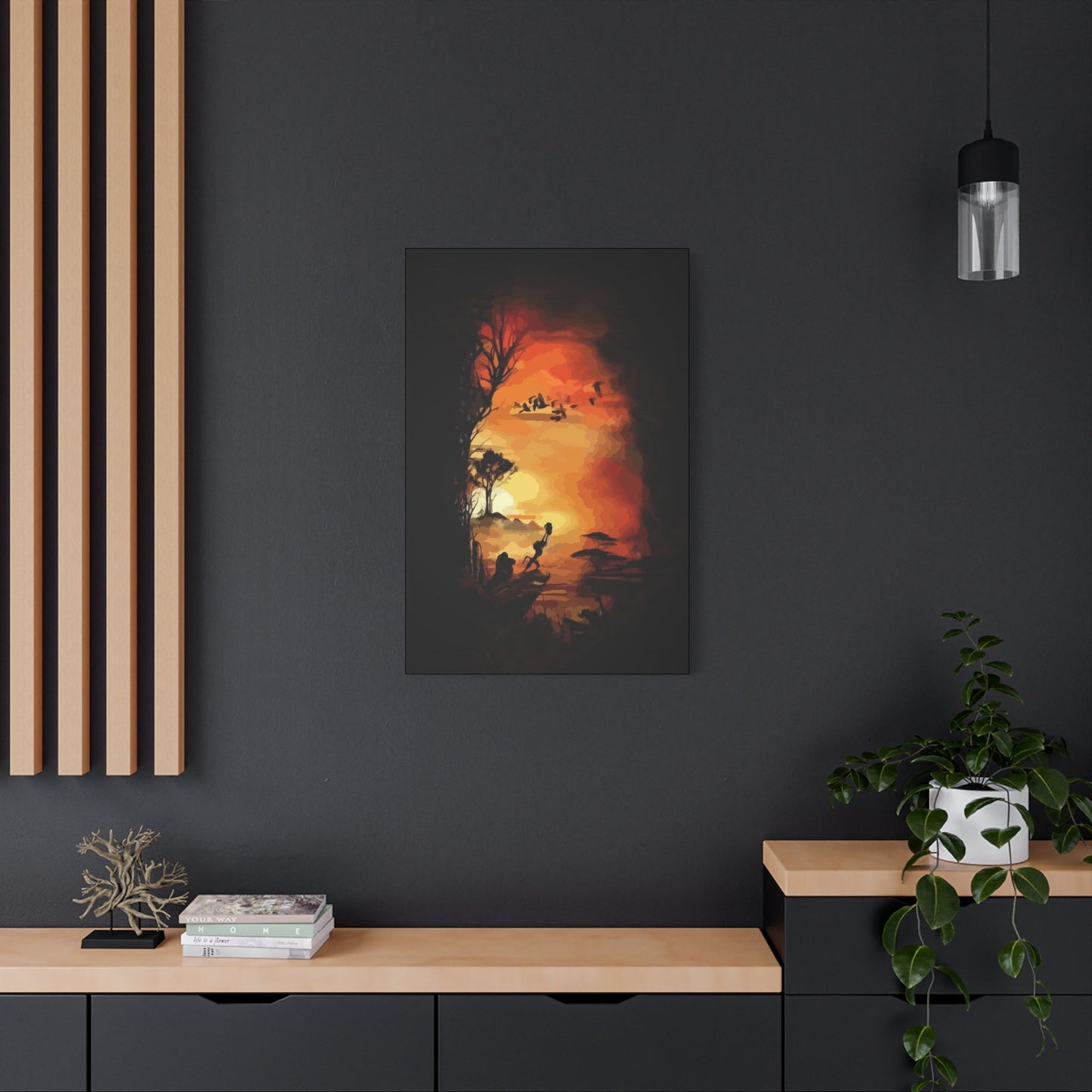Discover Enchanting Lion King Wall Art for Every Space in Your Home
The timeless story of Simba and his journey through the African savanna has captured hearts across generations. Decorating your living spaces with artwork inspired by this beloved animated classic offers more than visual appeal. These pieces bring warmth, nostalgia, and meaningful messages about courage, family bonds, and personal growth into your daily environment. Whether you're redesigning a child's bedroom, adding character to a playroom, or seeking conversation pieces for common areas, artwork featuring these iconic characters creates atmosphere while celebrating storytelling excellence.
This comprehensive exploration delves into numerous approaches for incorporating these decorative pieces into various rooms throughout your residence. From selecting appropriate dimensions and color palettes to understanding framing techniques and placement strategies, you'll discover everything needed to transform blank walls into captivating displays. The emotional resonance of these characters combined with stunning visual designs makes these artistic choices suitable for enthusiasts of all ages, from young children experiencing the story for their first time to adults who grew up with these unforgettable characters.
Creating Enchantment Within Your Living Spaces Through Savanna-Inspired Artwork
Transforming residential environments with imagery from this celebrated animated feature brings distinctive charm and personality to any room. These decorative pieces serve multiple purposes beyond simple wall coverage. They establish thematic consistency, introduce vibrant color schemes, and create focal points that draw attention while sparking conversation among visitors.
When selecting pieces for your home, consider the emotional atmosphere you wish to establish. The African savanna setting provides rich opportunities for incorporating warm earth tones, golden sunsets, and lush landscapes. These natural elements blend seamlessly with various interior design styles, from contemporary minimalism to traditional family-friendly spaces. The story's themes of responsibility, redemption, and the interconnectedness of all living things add depth to your decorating choices, making each piece more than simple ornamentation.
Installation locations significantly impact how these pieces interact with your existing décor. High-traffic areas like entryways and hallways benefit from bold, eye-catching designs that welcome guests and set the tone for your home's personality. Living rooms and family gathering spaces work well with larger statement pieces that become conversation starters. Private spaces like bedrooms allow for more intimate character selections that reflect personal connections to specific story moments or characters.
Lighting considerations enhance the visual impact of your chosen artwork. Natural light streaming through windows during morning hours highlights the warm color palettes common in savanna scenes. Evening artificial lighting creates different moods, making sunset scenes particularly striking when illuminated by warm-toned bulbs. Consider adjustable lighting options that allow you to modify the ambiance based on time of day and desired atmosphere.
The quality of materials significantly affects longevity and visual appeal. High-resolution printing techniques ensure crisp details that remain vibrant over years of display. Fade-resistant inks protect against sun exposure and general wear, maintaining color integrity in even the brightest rooms. Textured surfaces add depth and dimension, creating museum-quality presentations that elevate the perceived value of your decorating investments.
Ideal Selections for Children's Personal Spaces
Designing rooms where children sleep, play, and grow requires artwork that stimulates imagination while providing comfort and security. Imagery featuring beloved characters from this animated classic accomplishes both objectives beautifully. Young occupants develop emotional connections to these recognizable figures, making their personal spaces feel more welcoming and truly their own.
Character-focused pieces work exceptionally well in children's rooms because they provide familiarity and companionship. A young cub learning life lessons from his father resonates with children navigating their own developmental milestones. The meerkat and warthog duo adds humor and lightheartedness, perfect for creating playful atmospheres. The wise mandrill offers a mystical, protective presence that can comfort children during nighttime hours.
Color psychology plays an important role when decorating spaces for young people. Warm oranges, yellows, and reds from savanna sunsets energize without overwhelming, creating cheerful environments that encourage creativity and play. Cooler blues and greens from jungle scenes provide calming influences beneficial for sleep preparation. Balanced color schemes incorporating both warm and cool tones create versatile spaces suitable for various activities throughout the day.
Durability becomes particularly important in children's rooms where artwork may face occasional rough handling or cleaning challenges. Laminated surfaces or protective glass coverings shield prints from fingerprints, splashes, and minor impacts. Easy-to-clean materials allow parents to maintain pristine appearances without constant worry about accidental damage. Secure mounting systems ensure pieces remain safely attached to walls even in active play environments.
Growth considerations influence artwork selection for children's spaces. While very young children appreciate simple, bold character images, older children develop preferences for more complex scenes depicting memorable story moments. Selecting timeless designs that maintain appeal across age ranges extends the practical lifespan of your decorating investments. Neutral surrounding décor allows artwork to remain relevant as children mature and their tastes evolve.
Educational opportunities emerge naturally when discussing artwork with children. Story-based imagery provides openings for conversations about themes like responsibility, honesty, and perseverance. Geographic discussions about African ecosystems and wildlife can stem from savanna landscapes. Character relationships model friendship dynamics and family structures. These teachable moments transform simple room decorations into tools for ongoing learning and development.
Celebrating Beloved Characters Through Focused Artistic Displays
Each character from this animated masterpiece brings distinct personality traits and visual appeal. Designing displays that highlight specific favorites allows enthusiasts to express personal connections while creating cohesive thematic presentations. Character-focused decorating approaches work across all age groups and room types, from dedicated fan spaces to subtle accent pieces in general living areas.
The young protagonist's journey from carefree cub to responsible leader provides abundant imagery spanning the entire emotional spectrum. Early scenes capture innocent playfulness and curiosity, perfect for lighthearted spaces. Middle sequences depict self-discovery and personal growth, resonating with individuals facing their own transitions. Climactic moments showcase bravery and determination, inspiring viewers to face their own challenges with courage.
The wise father figure represents strength, wisdom, and unconditional love. Artistic representations of this character often incorporate majestic poses against dramatic backdrops, creating powerful focal points for any room. The emotional weight carried by this character adds depth to decorating choices, making these pieces particularly meaningful for parents and those who value family connections.
Supporting characters contribute personality and humor while balancing more serious thematic elements. The comedic duo brings lighthearted energy to any space, their antics frozen in moments of joy and friendship. The loyal advisor offers elegance and intelligence through sleek visual designs. The mystical guide provides spiritual depth and connection to natural cycles. Each supporting character offers unique decorating opportunities that complement primary protagonist displays.
Villain representations introduce dramatic contrast and visual interest. These darker characters feature bold color schemes and dynamic compositions that create striking accent pieces. When balanced appropriately with heroic characters, these elements add narrative completeness to comprehensive displays. The tension between good and evil depicted through character imagery adds depth and sophistication to decorating approaches.
Relationship dynamics between characters provide emotionally resonant decorating options. Father and son bonding moments capture universal family experiences. Friendships forged across unlikely companions celebrate diversity and acceptance. Romantic connections in sequel materials add layers for older audiences. Character interaction scenes tell visual stories that engage viewers beyond simple character recognition.
Making Bold Statements With Vibrant Young Protagonist Displays
Creating impactful focal points requires selecting imagery with strong visual presence and emotional resonance. Artwork featuring the young lion protagonist in various life stages offers opportunities for bold decorating statements that command attention while conveying meaningful messages about personal development and courage.
Large-scale presentations maximize visual impact by dominating wall space and establishing immediate room character. Oversized single pieces work particularly well above substantial furniture like sofas or beds, creating balanced compositions that anchor entire rooms. The protagonist's iconic silhouette against dramatic sunset backdrops translates beautifully to expansive formats, with warm color gradients filling significant square footage without overwhelming viewers.
Color intensity significantly affects the statement-making power of your selected pieces. Highly saturated oranges, reds, and yellows capture the heat and energy of African landscapes while creating cheerful, optimistic atmospheres. These bold palettes work exceptionally well in spaces dedicated to activity and social interaction. Slightly muted tones maintain visual interest while offering more versatility for coordinating with existing furnishings and paint colors.
Compositional choices influence how pieces interact with surrounding spaces. Centered subjects create formal, balanced presentations suitable for traditional decorating approaches. Off-center placements add dynamic energy and modern sensibility. Close-up character portraits establish intimate connections with viewers, while wide landscape shots emphasize environmental context and storytelling scope.
Multiple-panel arrangements allow for ambitious statement walls using coordinated imagery. Triptych presentations tell visual stories across three connected pieces, depicting character progression or sequential narrative moments. Grid arrangements featuring varied character expressions or environmental details create gallery-style displays that reward close examination while maintaining cohesive overall appearances.
Placement height affects viewer engagement and room functionality. Eye-level installations create direct connections between artwork and occupants, maximizing emotional impact. Higher placements draw eyes upward, making rooms feel more spacious while establishing artwork as architectural elements rather than simple decorations. Lower installations in children's spaces ensure young viewers can fully appreciate details and connect with characters at their perspective level.
Family Values and Friendship Themes in Decorative Artwork
The narrative core of this animated classic emphasizes relationships, responsibility, and the importance of community support. Artwork capturing these themes adds emotional depth to home environments while reinforcing positive values for family members of all ages. Decorating with intentional message-driven pieces creates opportunities for meaningful conversations and shared experiences around storytelling.
Intergenerational bonding scenes resonate particularly powerfully with parents and grandparents. Images depicting wisdom transmission from elder to youth mirror real-life family dynamics and celebrate these precious relationships. These pieces work beautifully in shared family spaces like living rooms and dining areas where multiple generations gather. The universal nature of parent-child relationships makes these images accessible and meaningful regardless of cultural background or personal family structure.
Friendship depictions celebrate loyalty, acceptance, and the strength found in diverse relationships. The unlikely trio formed between different species demonstrates how differences enrich rather than divide communities. These themes translate effectively into playroom and children's space decorating, providing positive social models. Adult spaces benefit equally from these friendship-focused pieces, serving as reminders of supportive relationships' importance in navigating life's challenges.
Responsibility themes manifest through imagery showing leadership moments and decisive actions. The protagonist's journey from avoiding responsibility to embracing his role offers visual metaphors for personal growth and maturity. These pieces suit office spaces, study areas, or anywhere individuals engage in focused work and decision-making. The inspirational nature of these images provides motivation during challenging tasks while maintaining aesthetic appeal.
Community celebration scenes depict the interconnectedness of all individuals within ecosystems. These ensemble images showcase multiple characters in harmonious interaction, emphasizing cooperation and mutual support. The visual richness of these multi-character compositions creates engaging focal points that reward repeated viewing. Thematic messages about collective strength and interdependence add philosophical depth to decorating choices.
Redemption arcs provide powerful visual narratives about forgiveness, second chances, and personal transformation. Character evolution depicted through sequential imagery or single transformative moments offers hope and encouragement. These pieces resonate with individuals facing their own challenges or working through personal growth processes. The universal applicability of redemption themes makes these decorating choices meaningful across diverse life experiences.
Professional Framing Techniques for Optimal Presentation
Proper framing significantly elevates the appearance and longevity of artistic displays. Understanding available options and making informed choices ensures your investment maintains pristine condition while achieving professional presentation quality. Framing decisions affect both aesthetic appeal and practical protection considerations.
Material selection forms the foundation of effective framing. Wood frames offer classic elegance with endless finish options ranging from natural woods to painted surfaces. Metal frames provide contemporary sleek appearances that complement modern décor styles. Composite materials balance affordability with durability while offering extensive color and texture options. Material choice should complement both the artwork itself and surrounding room aesthetics for cohesive integration.
Mat board additions create visual separation between artwork and frame edges while providing dimensional depth. Colored mats can either match dominant artwork hues for harmonious presentations or introduce contrasting colors for dramatic effect. White and off-white mats offer neutral versatility suitable for virtually any image. Mat width affects perceived artwork size and importance, with wider borders creating more formal, gallery-style presentations.
Glass or acrylic coverings protect artwork from environmental damage while affecting viewing experiences. Standard glass provides clarity at lower costs but adds significant weight and breakage risk. UV-protective glass prevents color fading from sunlight exposure, essential for pieces displayed in bright rooms. Anti-reflective glass eliminates glare issues in rooms with complex lighting situations. Acrylic alternatives reduce weight and shatter risk, particularly important for children's spaces or high-traffic areas.
Frame profiles influence overall aesthetic impact and compatibility with different décor styles. Wide, ornate frames suit traditional settings and add substantial visual weight to smaller pieces. Thin, minimal frames maintain focus on artwork itself while providing clean, contemporary appearances. Floating frames create the illusion of artwork suspended within frame boundaries, offering modern sophistication. Profile selection should balance personal taste with practical considerations like artwork size and room style.
Custom framing versus pre-made options involves trade-offs between cost, personalization, and convenience. Custom work ensures perfect sizing and allows unlimited material combinations for truly unique presentations. Professional framers provide expertise regarding conservation-grade materials and appropriate design choices. Pre-made frames offer cost savings and immediate availability but require artwork dimensions matching standard sizes. Hybrid approaches using custom mats with standard frames balance customization with budget considerations.
Installation hardware affects both security and flexibility. Wire hanging systems provide simple, reliable mounting for most frame weights and styles. French cleat systems distribute weight effectively for heavier pieces while allowing easy repositioning. Adhesive strips work for lightweight items in spaces where wall punctures should be minimized. Proper anchoring into wall studs or using appropriate drywall anchors prevents accidents and damage from frames falling.
Iconic Story Moments Captured in Artistic Form
Memorable narrative sequences from this animated feature provide rich visual material for artistic interpretation. Selecting scenes that resonate personally creates displays with deeper meaning while showcasing the story's emotional range and visual splendor. Scene-based artwork offers narrative depth that character portraits alone cannot achieve.
The opening sequence featuring the presentation of new life to the kingdom stands as one of animation's most iconic moments. The combination of ceremonial gravitas, stunning landscape vistas, and powerful musical accompaniment translates beautifully to static artistic representations. These images capture themes of new beginnings, community celebration, and the natural order's continuation. The dramatic composition with the elevated rock formation creates natural focal points that work exceptionally well as statement pieces.
Bonding moments between father and son under starlit skies provide intimate counterpoints to grand ceremonial scenes. These quieter images emphasize relationship depth and wisdom transmission across generations. The night sky setting introduces cooler color palettes and contemplative moods suitable for bedrooms or reading spaces. The philosophical discussion about ancestral connection and life's continuity adds spiritual dimensions to decorating choices.
Training sequences depicting the young protagonist learning essential skills show character development through action. These energetic scenes capture youthful enthusiasm and determination, making them excellent choices for spaces dedicated to learning or physical activity. The dynamic compositions with mid-action poses create visual interest and movement even within static images. Themes of mentorship and skill development resonate in study areas or anywhere personal growth is emphasized.
The carefree musical number in the jungle represents escapism and the appeal of avoiding responsibility. The lush, vibrant vegetation and playful character interactions create whimsical atmospheres perfect for entertainment spaces or children's play areas. The explosive color palette featuring tropical greens, bright flowers, and dappled sunlight brings energy and joy to any environment. This scene's lighthearted nature provides balance in displays featuring more serious story moments.
The truth revelation and return sequence depicts emotional awakening and acceptance of destiny. These powerful images show transformation and determination, capturing the story's emotional climax. The stormy atmospheric conditions and dramatic lighting create intense visual impact suitable for making bold decorating statements. Themes of courage, responsibility, and rightful place restoration offer inspiration and motivation.
The resolution sequence showing kingdom restoration and the circle of life's continuation provides narrative and thematic closure. These images celebrate triumph, community restoration, and generational cycles. The return to Pride Rock with gathered community creates visually rich, multi-character compositions. The optimistic tone and forward-looking perspective make these pieces excellent choices for spaces where families gather and celebrate their own ongoing stories.
Nostalgic Design Approaches for Vintage Aesthetics
The original animated release's cultural impact created nostalgic connections for audiences who experienced it during childhood. Vintage-inspired decorative approaches celebrate this history while creating intentionally retro aesthetics that honor the past while remaining visually compelling in contemporary spaces.
Original theatrical poster reproductions capture marketing materials from the initial release period. These pieces feature distinct design sensibilities from their era including specific typography styles, composition approaches, and color processing techniques. Authentic reproductions appeal to collectors and those seeking genuine period pieces. The recognizable poster format immediately communicates cultural awareness and appreciation for entertainment history. Framing treatments can enhance vintage aesthetics through distressed frames or preserved mounting techniques typical of the era.
Sepia-toned and faded color treatments artificially age contemporary prints for vintage appearances. These techniques mimic natural fading from years of light exposure or chemical changes in older printing processes. The softened color palettes create nostalgic, dreamlike qualities that evoke memory and passage of time. These treatments work particularly well when combined with distressed framing and mounting on aged-appearance papers or canvas. The resulting pieces feel like discovered treasures rather than new purchases.
Retro illustration styles reimagine characters through visual approaches popular during different historical periods. Mid-century modern interpretations using limited color palettes, geometric simplification, and bold graphic shapes create distinctive 1950s-60s aesthetics. Art nouveau influences with flowing organic lines and decorative borders evoke early 20th century design movements. These stylized reinterpretations honor source materials while filtering them through different artistic movements, creating fresh takes on familiar subjects.
Vintage typography and graphic design elements enhance period authenticity. Hand-lettered title treatments using brush scripts or serif fonts popular during specific eras establish immediate temporal connections. Decorative borders, corner flourishes, and textural backgrounds typical of older printing processes add authentic details. Color palettes limited to available printing technologies from various decades create convincing period pieces whether targeting 1930s theatrical posters, 1950s children's book illustrations, or 1970s psychedelic poster art.
Commemorative anniversary editions celebrate significant milestone years since original release. These special releases often feature enhanced production values, premium materials, and exclusive designs unavailable in standard product lines. Limited production runs increase collectability and value appreciation over time. Anniversary editions appeal to both original generation fans and newer audiences appreciating historic significance. Numbering and authentication documentation enhance collectability for serious enthusiasts.
Developing Comprehensive Gallery Arrangements
Creating cohesive multi-piece displays transforms individual artworks into unified presentations that tell stories and establish strong visual identities. Gallery-style arrangements require careful planning regarding piece selection, spatial relationships, and thematic connections for successful execution.
Thematic unity provides conceptual foundations for gallery collections. Selecting pieces that share common elements creates coherence despite individual differences. Character-focused galleries feature multiple interpretations of the same figure showing different expressions, ages, or artistic styles. Scene-based collections document narrative progression through sequential story moments. Style-focused arrangements showcase varied artistic interpretations of common subjects whether minimalist, realistic, abstract, or illustrative. Clear thematic directions help viewers understand curatorial intentions while creating satisfying visual experiences.
Color coordination ensures visual harmony across multiple pieces. Selecting items sharing dominant color families creates automatic cohesion even with varied subjects. Analogous color schemes using neighboring color wheel positions offer unity with subtle variation. Complementary approaches with opposite colors create dynamic tension within overall harmony. Neutral-dominated pieces with consistent accent colors provide sophisticated coordination. Careful color planning prevents visual chaos while allowing individual pieces to maintain distinct identities within larger contexts.
Size variation adds visual interest while preventing monotonous uniformity. Anchor pieces using larger dimensions establish focal points and organizational centers. Medium-sized works provide supporting elements that build out from central pieces. Smaller items fill gaps and add detail without overwhelming. Varied dimensions create rhythm and movement as eyes travel across arrangements. Size progression from large to small or symmetrical size distributions around central pieces offer different organizational approaches each creating distinct visual effects.
Spacing consistency affects perceived professionalism and intentionality. Uniform gaps between pieces create orderly, formal presentations suitable for traditional spaces. Varied spacing with strategic clustering and separation creates organic, dynamic arrangements with contemporary appeal. Generally, spacing between two and four inches works for most gallery walls, with adjustments based on piece sizes and overall arrangement dimensions. Consistent spacing demonstrates careful planning rather than haphazard placement.
Frame coordination unifies disparate pieces through consistent presentation materials. Identical frames across all pieces create strongest unity, ideal when pieces vary significantly in style or subject. Coordinated frames using similar materials with varied profiles or colors allow subtle differentiation while maintaining overall cohesion. Mixed framing approaches work when pieces themselves share strong color or subject relationships that provide unity. Completely unmatched frames require exceptionally careful curation to avoid appearing disorganized.
Layout planning prevents installation mistakes and allows visualization before committing to wall mounting. Creating paper templates matching exact piece dimensions enables testing arrangements without creating unnecessary holes. Digital tools and smartphone applications allow virtual arrangement planning with photographs of actual walls and pieces. Floor layouts spread pieces on the ground in final configurations provide three-dimensional arrangement previews. Thorough planning saves time, prevents damage, and ensures satisfaction with final results.
Grid arrangements provide structured, contemporary aesthetics with clean, geometric organization. Pieces aligned in rows and columns create satisfying symmetry and order. Grid approaches work particularly well with same-sized pieces but accommodate size variations when carefully planned. The mathematical precision appeals to viewers appreciating contemporary design sensibilities. Grids suit modern and minimalist spaces where clean lines and order dominate design philosophies.
Salon-style arrangements embrace organized chaos with pieces of varying sizes arranged without rigid geometric structure. This traditional approach mimics museum and gallery practices from earlier centuries. Salon arrangements allow incorporating diverse piece sizes and orientations within unified displays. The organic, puzzle-like fitting together of elements creates visual richness and rewards close examination. This approach suits eclectic and traditional spaces where curated abundance creates appealing maximalism.
Linear arrangements work beautifully in hallways, above furniture, or spanning single walls. Horizontal lines create calming, stable impressions while vertical arrangements add height and drama. Single-row arrangements simplify planning and installation while creating clean, focused presentations. These streamlined approaches suit both contemporary minimalism and situations where wall space constraints prevent more complex arrangements.
Asymmetrical balance creates dynamic, engaging compositions without formal symmetry. Visual weight distribution ensures arrangements feel stable despite lacking mirror-image balance. Larger pieces balanced by multiple smaller items, or color intensity balancing size differences create equilibrium through varied means. Asymmetry adds contemporary sophistication and visual interest that symmetrical arrangements sometimes lack. This approach requires more careful planning but produces distinctive, memorable results.
Character-Specific Selections for Focused Displays
Individual character appeal drives many decorating decisions, with viewers developing strong preferences for specific personalities. Dedicating displays to favorite characters creates personalized environments while exploring these figures' visual and thematic richness.
The young protagonist offers extensive imagery spanning age ranges and emotional states. Cub representations capture innocence, curiosity, and playful energy perfect for children's spaces. Adolescent imagery depicts self-discovery, rebellion, and eventual maturity. Adult characterizations show leadership, responsibility, and parental care. This progression allows selecting representations matching viewers' ages or desired atmospheric qualities. The character's universal appeal makes focused displays successful across diverse settings and audiences.
The royal father figure embodies strength, wisdom, and protective love. Artistic representations typically emphasize majesty through dramatic poses and lighting. The character's limited screen time concentrates imagery around particularly memorable moments including teaching scenes, ceremonial presentations, and spiritual appearances. The emotional weight associated with this character makes focused displays particularly meaningful for fathers and those valuing parental relationships. Color palettes often feature warm, golden tones emphasizing regality and solar associations.
The maternal figure represents grace, nurturing care, and fierce protectiveness. This character receives less commercial focus than male counterparts but offers important female representation. Artistic interpretations emphasize elegance and strength, challenging assumptions about gentle characters lacking power. Displays featuring this character appeal to mothers and daughters while providing valuable feminine presence in male-dominated narrative. The character's role as both caregiver and fighter offers complex personality dimensions for artistic exploration.
The comedic duo provides humor and lighthearted energy to any display. These characters' mismatched physical appearances and complementary personalities offer visual interest and dynamic compositions. Their philosophy of avoiding problems and embracing carefree living contrasts with more serious thematic elements. Displays featuring this pair work wonderfully in entertainment spaces, kitchens, and anywhere levity is welcomed. The characters' broad appeal across age groups makes them safe choices for shared family spaces.
The loyal advisor character offers intelligence, competence, and unwavering dedication. Visual representations emphasize the character's dignified bearing and alert posture. Color schemes feature the character's distinctive reddish plumage against contrasting backgrounds. This character appeals to viewers valuing loyalty, wisdom, and steadfast support. Displays featuring this figure suit offices and study areas where similar qualities prove beneficial.
The spiritual guide character brings mystical depth and connection to natural cycles. Artistic interpretations often incorporate spiritual symbolism and dramatic lighting effects. The character's colorful appearance and animated personality translate beautifully to vibrant artistic treatments. Displays featuring this figure appeal to viewers interested in spirituality, tradition, and life's deeper meanings. The character bridges comedy and profundity, making focused displays suitable for diverse settings.
The primary antagonist provides dramatic contrast and visual intensity. This character's dark coloration, sinister expressions, and commanding presence create striking imagery. While potentially too intense for young children's primary displays, older audiences appreciate the character's complexity and dramatic value. Villain-focused pieces work particularly well balanced within larger collections including heroic characters. The tension between good and evil adds narrative completeness and visual contrast.
Supporting characters from extended narratives provide additional options for dedicated fans. Characters introduced in sequel materials expand available personality types and visual aesthetics. Female characters offer increased representation and different relationship dynamics. These expanded character options allow deeper personalization for viewers with broader familiarity across the entire franchise rather than solely the original feature.
Collectible Limited Production Pieces and Investment Value
Certain artistic productions achieve collectible status through limited availability, premium production quality, or notable artist involvement. Understanding collectible markets helps enthusiasts make informed acquisition decisions balancing personal enjoyment with potential value appreciation.
Limited edition numbering restricts production quantities creating artificial scarcity. These pieces typically include documentation specifying edition size and individual piece numbers. Lower numbers within editions sometimes command premium prices from collectors who value being among first purchasers. Edition sizes vary dramatically from extremely limited runs under fifty pieces to larger editions of several thousand. Smaller editions generally appreciate more significantly but cost more initially. Certificate authenticity documentation proves legitimacy and maintains value chains through ownership transfers.
Artist signatures and involvement significantly impact collectible value. Official artwork created by original production artists commands premium prices reflecting both artistic merit and historical authenticity. Contemporary artists reimagining characters through distinctive personal styles create unique pieces valued for artistic interpretation rather than production authenticity. Hand-embellished pieces where artists add original paint or drawing elements to prints bridge mass production and original art. Signature placement, whether incorporated into artwork or separately on mats or backing, affects presentation aesthetics and authenticity verification.
Premium material selections distinguish collectible pieces from standard commercial products. Museum-quality canvas and archival papers ensure longevity and professional presentation. Specialized printing techniques including giclee processes produce superior color accuracy and detail resolution. Hand-applied finishing elements like gold leaf accents, textured varnishes, or dimensional effects add unique character. These production quality investments increase initial costs but deliver superior aesthetic results and better value retention.
Exclusive release partnerships create specialized collectible markets. Gallery-specific editions available only through particular retailers become targets for serious collectors. Convention exclusives released at entertainment industry events offer limited acquisition windows and distinctive designs. Subscription service exclusives reward ongoing memberships with pieces unavailable through other channels. These distribution restrictions create secondary markets where pieces may trade at significant premiums over original purchase prices.
Anniversary and commemorative editions mark significant milestones with special production runs. Major anniversary years prompt releases featuring premium treatments and exclusive designs. Film restoration or re-release campaigns generate contemporary collectibles celebrating historical moments. These temporal connections add narrative context enhancing emotional and financial value. Collectors often seek complete anniversary sets spanning multiple milestone years.
Original production materials represent the ultimate collectibles for serious enthusiasts. Authentic animation cels used in production contain actual frames from finished films. Concept artwork and preliminary sketches document creative development processes. These one-of-a-kind items command substantial prices reflecting absolute uniqueness and historical significance. Authentication and provenance documentation become critical for these high-value items. Serious collectors often work with specialized dealers and auction houses for major acquisitions.
Market research and value tracking inform collecting strategies. Online marketplaces and auction results provide pricing benchmarks for specific pieces. Collecting communities share information about rare items and market trends. Professional appraisers offer expert opinions for valuable pieces or comprehensive collections. While most enjoy collections purely for personal satisfaction, understanding market dynamics helps make strategic acquisition decisions and properly insure valuable holdings.
Condition maintenance preserves both aesthetic appeal and financial value. Proper framing using UV-protective glass prevents fading and environmental damage. Climate-controlled storage for uninstalled pieces prevents warping, mildew, and degradation. Regular inspection catches developing problems before major damage occurs. Professional conservation services address significant issues while maintaining authenticity. Meticulous condition maintenance proves essential for pieces intended as long-term investments or eventual resale.
Thoughtful Gifting for Enthusiastic Fans
Artwork featuring beloved characters makes meaningful gifts for enthusiasts across all age groups. Understanding recipient preferences and thoughtful presentation creates memorable gifting experiences that strengthen relationships while celebrating shared interests.
Age-appropriate selections ensure gifts resonate with recipients' maturity levels and aesthetic preferences. Young children appreciate bright, character-focused pieces featuring friendly expressions and simple compositions. School-age children develop preferences for specific characters and story moments allowing more targeted selections. Teenagers respond to edgier, stylized interpretations rather than overtly childish presentations. Adults appreciate sophisticated artistic treatments, nostalgic vintage styles, or humorous pieces appropriate for mature audiences. Careful age consideration prevents gifts feeling patronizing or inappropriate.
Personal preference research improves selection success rates. Favorite characters revealed through casual conversations guide choices toward deeply meaningful options. Room décor styles observed during visits suggest appropriate aesthetic approaches. Social media posts about entertainment preferences provide selection clues. For close relationships, directly asking about preferences eliminates guesswork while demonstrating thoughtfulness. Investment in understanding recipients' tastes significantly increases appreciation and actual use of gifts.
Occasion appropriateness affects piece selection and presentation approaches. Birthday gifts might feature age-specific themes or milestone recognitions. Holiday gifts during winter celebrations could emphasize family togetherness themes. Graduation gifts might focus on inspirational leadership and courage themes. New home or nursery gifts help recipients establish personal spaces reflecting their interests. Matching gifts to occasions adds contextual meaning beyond simple object exchange.
Customization options create unique pieces unavailable through standard retail channels. Adding recipients' names makes gifts feel specifically created for them rather than generic items anyone might own. Incorporating significant dates commemorates important life moments. Selecting specific quotes resonating with recipients' values or life situations demonstrates deep consideration. Custom color schemes matching recipients' existing décor show practical thoughtfulness ensuring gifts integrate seamlessly into living spaces.
Presentation quality enhances perceived gift value and demonstrates care in giving. Professional wrapping or gift bags appropriate to item size create positive first impressions. Tissue paper in coordinating colors adds polished finishing touches. Gift cards with personal messages explain selection reasoning and express genuine sentiments. For shipped gifts, sturdy packaging prevents damage while creative presentation materials create excitement during unboxing experiences. Investing effort in presentation communicates that both gift and recipient matter.
Accompanying explanatory materials add educational and emotional value. Including information about artistic techniques or artist backgrounds provides conversation topics and deeper appreciation. Sharing personal connections to the story explaining why this particular gift seemed meaningful strengthens relationship bonds. For children's gifts, including related books or activities extends engagement beyond wall décor into broader educational experiences. These supplementary elements transform simple object gifts into comprehensive, thoughtful presentations.
Budget considerations allow finding appropriate options across all price ranges. Small prints and posters provide affordable entry points while still offering genuine fan appeal. Mid-range options including framed pieces or canvas prints balance quality with accessibility. Premium collectibles and custom pieces suit significant occasions or particularly important relationships. The breadth of available options ensures meaningful gifts exist for every budget level without requiring excessive spending. Thoughtfulness matters more than cost in creating appreciated gifts.
Group gifting enables accessing premium pieces beyond individual budgets. Family members pooling resources can purchase significant items for major milestones. Office colleagues combining funds create substantial retirement or farewell gifts. Friend groups collaborating on birthday presents access quality levels impossible individually. Coordinated group gifts also allow comprehensive sets or gallery walls rather than single pieces. Organizing group contributions requires coordination but delivers impressive results that single givers cannot match.
Contemporary Minimalist Interpretations for Modern Aesthetics
Current design trends emphasizing simplicity, clean lines, and restrained ornamentation create opportunities for reimagining characters through minimalist artistic approaches. These contemporary interpretations honor source materials while aligning with modern aesthetic preferences.
Geometric simplification reduces complex character designs to essential shapes and forms. Circular elements represent the protagonist's face and mane. Triangular forms suggest powerful poses and dynamic compositions. Rectangular backgrounds provide clean, uncluttered settings. These fundamental shapes create immediately recognizable imagery despite radical simplification. The resulting designs feel contemporary and sophisticated while maintaining clear connections to beloved characters.
Limited color palettes embrace restraint and intentional choice over comprehensive representation. Monochromatic schemes using single colors with varied values create elegant, cohesive presentations. Duotone approaches combining two complementary or analogous colors offer slightly more complexity while maintaining minimalist sensibilities. Accent color strategies place single bright hues against neutral backgrounds for maximum impact with minimum complexity. These restricted palettes demonstrate artistic discipline and contemporary design awareness.
Negative space utilization allows backgrounds to define forms as significantly as applied colors. Character silhouettes against contrasting backgrounds create instant recognition through outline alone. Strategic empty spaces within compositions provide visual rest and emphasize remaining elements. The balance between filled and empty areas creates sophisticated tension central to successful minimalist design. Viewers trained by contemporary aesthetics appreciate these subtle relationships and intentional restraint.
Line art representations eliminate color entirely, relying solely on linear elements to define forms. Continuous single-line drawings create characters through unbroken marks suggesting volumes and features. Contour drawings emphasize outlines and essential details while eliminating unnecessary information. Variable line weights add dimension and emphasis without introducing color complexity. These linear approaches create gallery-ready artwork that transcends commercial character merchandise appearing as legitimate contemporary art.
Typography-focused designs elevate memorable dialogue and themes to primary visual elements. Single significant words like pride, family, courage, or remember become artistic subjects themselves. Careful font selection balances readability with aesthetic interest and character appropriateness. Text arranged into character silhouettes combines verbal and visual messaging. Quote-based minimalism appeals to viewers valuing philosophical content over purely decorative imagery. These text-centric pieces work particularly well in offices and study areas where inspirational messaging supports productive environments.
Abstract interpretations distance designs from literal character representation while maintaining thematic connections. Color field paintings suggesting savanna sunsets evoke settings without depicting specific locations. Geometric patterns inspired by character markings create visual interest divorced from narrative specifics. Emotional color combinations and compositions capture story feelings without illustrative imagery. These abstract approaches suit viewers preferring suggestions over explicit representations and contemporary art enthusiasts.
Whitespace dominance creates breathing room and peaceful visual experiences. Minimalist pieces often feature far more empty space than actual imagery, with subjects occupying small percentages of total compositions. This restraint prevents visual overwhelm common in busy, detailed artwork. The calm, uncluttered nature of whitespace-dominant pieces suits contemporary interiors favoring similar aesthetic philosophies. These pieces provide character connections without dominating spaces or conflicting with minimalist décor approaches.
Scandinavian and Japanese design influences inform many contemporary minimalist interpretations. Nordic aesthetics emphasizing functionality, natural materials, and muted palettes create accessible, livable minimalism. Japanese principles of ma appreciating negative space and wabi-sabi embracing imperfection add philosophical depth. These cultural design traditions offer frameworks for creating minimalist pieces that feel warm and humanistic rather than cold or sterile. International design influences expand minimalist possibilities beyond purely Western contemporary approaches.
Enriching Play Spaces and Infant Environments
Designing environments for the youngest family members requires balancing stimulation with safety, durability with aesthetics, and current appeal with growth adaptability. Artwork in these specialized spaces serves developmental purposes alongside decorative functions.
Color selection impacts infant development and childhood learning. High contrast combinations support developing vision in very young infants. Primary colors provide clear, distinct stimulation for toddlers learning color identification. As children mature, more complex color relationships introduce aesthetic education. Bright, saturated palettes maintain engagement and energy in play-focused environments. These developmental considerations inform age-appropriate color choices that grow with children.
Character familiarity provides comfort and security for young children. Recognizable figures become companions and sources of reassurance during solitary play or bedtime. The friendly expressions and non-threatening designs of main characters suit even very young children's sensibilities. As children age and narrative understanding develops, these same characters take on deeper meanings connected to story comprehension. This progression allows single pieces to remain relevant across multiple developmental stages.
Educational integration transforms decorative elements into learning tools. Artwork depicting multiple characters supports counting practice and numerical concepts. Color-focused pieces facilitate color recognition and naming. Story sequence imagery aids narrative comprehension and sequential thinking development. Alphabet integrations using character-themed letters combine literacy learning with entertainment interests. These educational dimensions add value beyond pure decoration, supporting cognitive development through everyday environmental exposure.
Safety considerations prove paramount in spaces occupied by young children. Shatter-resistant acrylic coverings prevent injury from broken glass during accidents or rough play. Secure mounting systems prevent pieces from falling if bumped or pulled. Rounded frame corners eliminate sharp edges that could cause injury. Non-toxic materials ensure safety if children touch or even mouth frames or corners. These safety features protect children while providing parents peace of mind.
Durability requirements exceed those for adult spaces given children's activity levels and accident frequency. Wipeable surfaces allow easy cleaning of fingerprints, spills, and artistic experiments. Fade-resistant inks maintain appearance despite bright lighting common in play areas. Sturdy frames and mounting systems withstand vibrations from play, running, and general chaos typical in children's environments. Investment in durable materials prevents frequent replacements while maintaining attractive appearances.
Growth adaptability extends useful lifespans as children develop and preferences evolve. Neutral surrounding décor allows artwork to remain relevant as paint colors and textiles change. Classic character imagery versus trendy stylistic treatments affects long-term appeal. Timeless designs transcend specific age ranges, working for toddlers and older children alike. Modular approaches using multiple smaller pieces allow gradual updates replacing individual items rather than complete overhauls. These forward-thinking strategies maximize value from initial investments.
Interactive elements engage children beyond passive viewing. Textured surfaces inviting touch create multisensory experiences supporting development. Moveable elements or flaps revealing hidden images encourage exploration and fine motor skill practice. Growth charts featuring character imagery serve functional purposes while providing beloved decorative elements. These interactive approaches transform static artwork into engaging activity components.
Thematic consistency between artwork and broader room design creates immersive environments supporting imaginative play. Safari or jungle themes suggested by artwork extend through textiles, accessories, and toy selections. Color palette repetition throughout rooms creates cohesive, intentional design rather than random decoration. Coordinated elements help children develop aesthetic awareness and appreciation for intentional design choices. These comprehensive approaches create memorable childhood environments that positively impact development and family memories.
Conclusion
The enchanting world of The Lion King offers more than just a captivating story—it provides a rich source of inspiration and artistry that can transform any home into a space filled with warmth, meaning, and vibrant energy. Incorporating Lion King wall art into your living environment allows you to celebrate timeless themes such as courage, growth, family, and the circle of life, while also adding a visually stunning and personalized touch to your decor.
One of the greatest strengths of Lion King wall art is its remarkable versatility. From classic scenes featuring iconic characters like Simba, Mufasa, and Nala to modern, abstract interpretations, there is truly something for every aesthetic and space. Whether you prefer the nostalgic charm of vintage animation prints or the boldness of contemporary metal sculptures, these art pieces bring a unique flair that transcends age and style boundaries. This diversity ensures that no matter your taste or the atmosphere you want to create, Lion King-themed decor can be seamlessly integrated, enriching your home with color, texture, and a story to tell.
Furthermore, Lion King wall art isn’t confined to children’s bedrooms or nurseries, as many might assume. Its appeal extends to a wide variety of rooms throughout the home. In living rooms, a striking Lion King canvas can become a centerpiece that ignites conversations and draws admiration from guests. In bedrooms, softer, more serene artworks can foster a calming environment ideal for rest and reflection. Even workspaces benefit from the inspiring messages and imagery of The Lion King, motivating focus and resilience as you navigate your daily tasks. This adaptability makes Lion King art a practical and meaningful choice for decorating your home in a way that feels both personal and inspiring.
Beyond aesthetics, Lion King wall art carries profound symbolic value. The narrative itself—centered around themes of responsibility, bravery, redemption, and the interconnectedness of life—resonates deeply with many. Displaying these themes through artwork serves as a constant reminder of the lessons the story imparts. For many, it is a source of motivation and emotional connection, bringing a sense of purpose and balance to everyday life. The art thus becomes more than decoration; it is an expression of values and memories, evoking both nostalgia and hope.
Moreover, investing in Lion King wall art also supports a wider appreciation of creative craftsmanship. Whether handmade by independent artists or officially licensed pieces, these artworks showcase skill and passion that bring the beloved story to life in new and exciting ways. This not only enhances your home environment but also contributes to the cultural celebration of a story that has touched millions of lives worldwide.
In conclusion, Lion King wall art offers an enchanting way to infuse your home with beauty, inspiration, and heartfelt meaning. Its broad range of styles and adaptability to different spaces make it an ideal choice for those looking to personalize their surroundings with something both visually appealing and deeply significant. Whether you choose a dramatic portrait of Simba standing proudly on Pride Rock or a subtle abstract interpretation of the circle of life, these pieces invite you to carry the spirit of The Lion King into your everyday world. By embracing this iconic imagery, you are not only decorating your walls—you are celebrating a timeless tale of life’s adventures, challenges, and triumphs, making your home a true reflection of your journey and values.

















